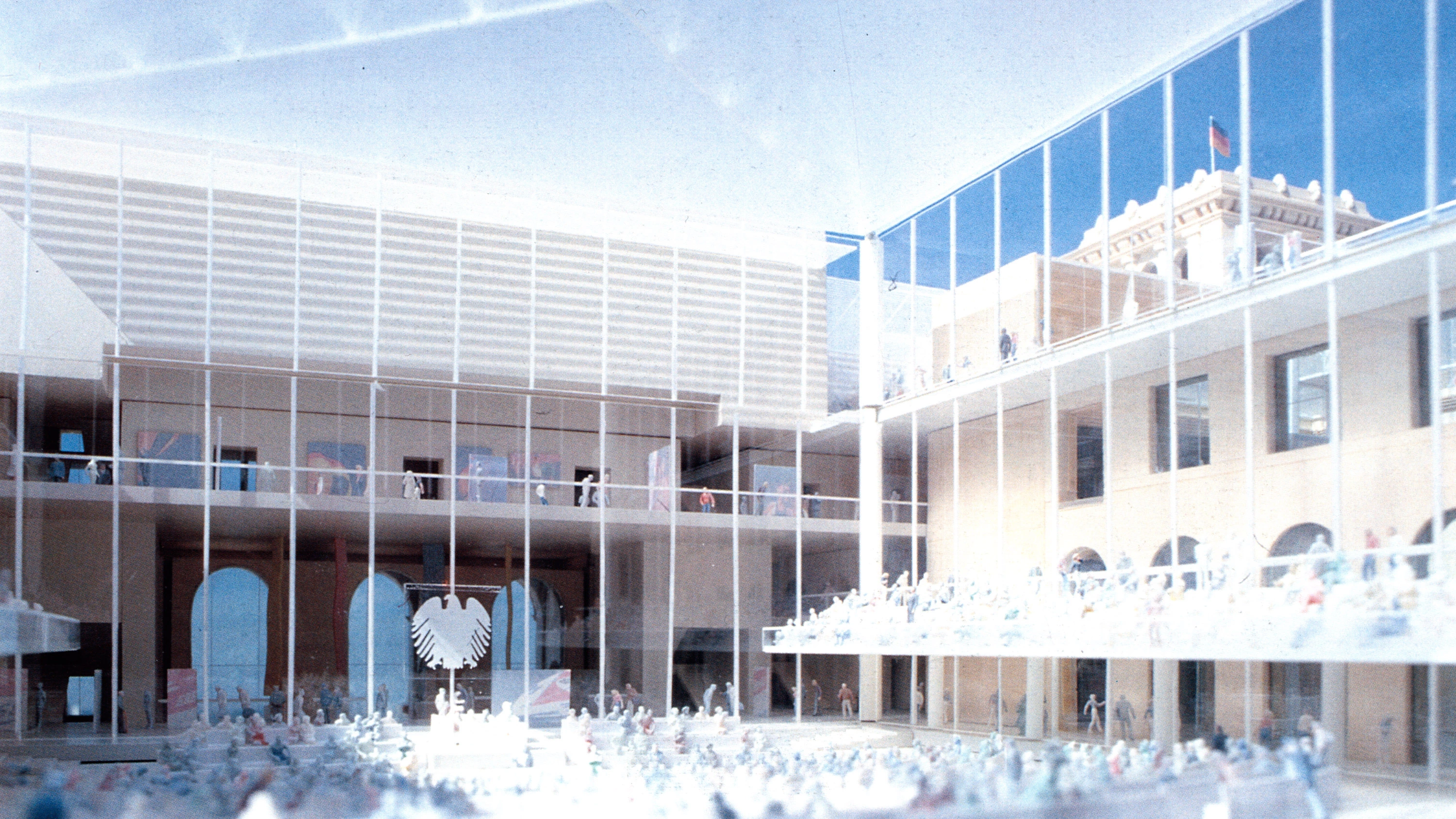Reischtag: Rebuilding the Parliament
Foster / Calatrava / De Bruijn

Norman Foster, propuesta revisada
The eventful history of the Reichstag building, built in 1894 according to a design by Paul Wallot (see Arquitectura Viva 30), is closely linked to the vicissitudes of the Spreebogen area where it is located. The latest episode in this story is the coincidence of the competitions for the development of the Spreebogen and the extension of the Reichstag. This overlapping of invitations to tender, a product of the conflict between administrations, results in a certain inconsistency between the respective programs and is detrimental to the unitary development of the area.
The Reichstag competition, announced in May 1992 and awarded in February 1993, with a first prize shared between the proposals of Norman Foster, Santiago Calatrava and Pi de Bruijn, has been the subject of the most heated controversy due to the conflicting connotations of this building, representative for many of the continuity of the Great German Nation. Having ruled out the reconstruction of Wallot's original dome, a symbol of the building's more dangerous political connotations, the various proposals to replace this architectural element characterized the first stage of the competition: Pi de Bruijn eliminated it completely, and turned the Reichstag into just another piece within a three-volume composition raised on a sort of podium; Norman Foster covered the building with an excessive translucent canopy; Santiago Calatrava, at last, was the only one to take up the theme of the dome without restraint, adapting it to his expressive language...[+]






